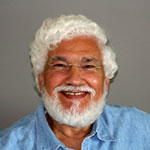November 28, 2013
Portraits: Paris, London, York and Montmartre - Part 3/3
Time has dealt kindly with York. Still it is possible to find here almost continuous pageant of the ages from Roman times, and possibly even earlier than that, down to the president day.
Not many towns in Europe can show a Roman bastion at one end of their principle street and, practically at the other, a Norman mound with Plantagenet keep – and a thousand years between. No other town can provide such a promenade as that made possible on the Walls. From whatever angle you view the city, the glorious fifteenth-century Minster dominates the scene. Timber-framed houses, gracious Georgian homes and substantial Victorian mansions are to be found here.
In preparation for my visit to York, I bought from a used book store in my Canadian home city of Waterloo a book about York, one of the “Our Beautiful Homeland” series books. The book was by I. P. Pressly with “eight plates in color from paintings by Leonard Squirrell” and was published in the early 1900s.
I could not find much about Pressly but I got to know about Squirrell (1893-1979). His work “was held in many public and private collections, including Victoria & Albert Museum, British Museum and Fitzwilliam Museum in Cambridge.”
Pressly writes about York Minster; “It is not only the largest church in the British Isles, it is one of the four largest in Europe on this side of the Alps and Pyrenees. ‘Dull would he be of soul’ who could pass, unimpressed, this magnificent pile, which on a clear day, can be seen miles away, riding the level plain of York like a great ship.
“The present building dates from the fifteenth century, when the extensive work of enlargement and restoration, began by Archbishop Walter de Gray (between 1230 and 1241, was completed and the great Cathedral reconstructed on July 3rd, 1472, after nearly 250 years.
My next stop was Paris, the City of Light, which unlike other capitals did not just happened but it was, for the most part, state planned by kings, sometimes emperors.
It was the centre stage of one of modern history significant events; the French Revolution. On July 14, 1789, Parisians took siege of the Bastille fortress, a symbol of absolutism.
Many Arab students, writers and artists came to Paris in the 1900s. In Paris they founded Arabic magazines and newspapers, Arab bookshops and publishing houses. Egyptians came to Paris to bring back the liberal spirit they found on the banks of the Seine to the banks of the Nile. The great literary writer Tawfiq al-Hakim, who came to Paris in 1925 went home five years later in a blue beret (I bought myself one while I was here) to write pioneering Arabic plays.
Paris is the home of Institut Du Monde Arabe, the Arab World Institute (AWI), an elegantly glass-walled showcase of Arab civilization on the banks of the Seine. The Institute's daring architecture is recognized as Paris’s most imaginative modern building, it is as much a part of the Paris landscape as the Egyptian obelisk erected at the Place de la Concorde.
Inside the AWI building, space is defined by light and shadow, not by solid structure - an idea that French architect Jean Nouvel says he derived from Arab architectural traditions. When its curved glass front wall reflects the Seine in bright daylight, you can still discern jeweled rays of sunlight beaming through the back wall into the building's shadowy inner spaces.
These shapes and shafts of sunlight are not the result of a happy accident: They are sculpted into a decorative geometry of light by computer-controlled metallic diaphragms - 25,000 of them - that comprise the Institute's southern facade. The deceptively simple-looking glass building is designed to create a mood of give-and-take with its surroundings:
At night, the cylindrical six-story library tower, with its lighted spiraling ramp, seems to symbolize the institute's educational vocation in its Latin-Quarter site, the traditional heart of French academia.
The Institute is a joint venture between France and Arab nations; it reflects the opinion, in all those countries, that the Arab world - its civilization and values, its past and its future - needs to be better known and understood in the West.
Conceived in 1973 by French President Valéry Giscard d'Estaing, the AWI proposal reflected France's heightened interest in the Arab world. French President François Mitterrand personally presided at the AWI’s inauguration in December 1987.
Nouvel, then only 36 aided by a French scholar of Islamic architecture and city planning, he delved into books, paintings and even movies to select a few basic themes and motifs for the building: "The core values of Arab architecture are impressive: generosity combined with precision, even preciousness - and I tried to translate those into my design," he said.
"The building expresses the idea of Arab architecture; it has Arab architectural values without being Arab. It is suggestive, emotional, sensual," he added, "What I wanted was an architecture of sensations, of emotions. The Arab project gave us a chance to work with the values of Islamic architecture, which proved to fit strongly with my idea of trying to build with cultural materials instead of simply with bricks and mortar or steel and rectangular perspectives."
My last stop this summer was Montmartre, the town on the hill north of Paris, with more French flavor than the capital. It is known for the white-domed Basilica of the Sacre Coeur (built from 1876 to 1912) and the much smaller but older church of Saint Pierre de Montmartre at which the Jesuit order was founded. Many famous artists worked here like Salvador Dali, Picasso and Vincent van Gogh. And still many artists have their studios here and sell their works at an open air gallery. If interested they cal also do a quick portrait of you while you having your lunch. The 1965 Aznavour’s song La Boheme recalls a painter’s lost youthful years in Montmartre.








